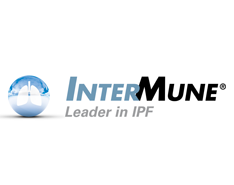crisis communications
Can healthcare PR be a crime?
by Joshua Schneck

 | September 24, 2013
| September 24, 2013
Can healthcare PR be a crime? In the case of ex-InterMune CEO W. Scott Harkonen, the answer is yes – according to the U.S. government, a Federal jury and the Ninth Circuit Court of Appeals. David Brown writes in The Washington Post about how Harkonen was convicted for issuing a press release that, according to the U.S. government, willfully overstated the benefits of a drug made by his company.
InterMune is a public company focused on pulmonary and orphan fibrotic diseases. It markets a medicine for idiopathic pulmonary fibrosis (IPF) and is in product development and clinical trials on other drugs.
No Factual Errors
According to Brown’s article, there were no factual errors in the press release in question. It was the interpretation of the facts that was deemed criminal. This raises troubling questions for a Minneapolis healthcare PR firm like ours, and our clients. When does promoting a point of view become a crime?
From the Post article:
“If you applied this rule to scientists, a sizable proportion of them might be in jail today,” said Steven N. Goodman, a pediatrician and biostatistician at Stanford University who submitted a statement supporting Harkonen’s appeal. “The courts don’t quite realize the significance of what is in front of them or the furor that might erupt if this kooky precedent is allowed to stand.”
Ruling a word of caution to a Minneapolis healthcare PR firm
This ruling is a word of caution to a Minneapolis healthcare PR firm that works in healthcare PR and healthcare content marketing. Can healthcare PR be a crime? It can in some cases, but there is a free speech issue here that needs to be thought through carefully.
Ultimately, it gets down to what patients are entitled to know. They shouldn’t be deceived, obviously, but should they be prevented from knowing a company’s interpretation of research facts? I don’t claim to have the answer, but it’s a question worth asking.
Preparing the Source
by admin | June 1, 2012
This is Part 5 in a five-part series titled The Art of the Pitch.
Part 1, Four Factors That Make for an Ideal Pitch, can be found here.
Part 2, Doing Your Pitch Homework, can be found here.
Part 3, Crafting the Pitch, can be found here.
Part 4, Sending the Pitch, can be found here.
The most important piece for any media relations campaign is the source itself. After all, what good is a carefully crafted pitch if the interviewee is underprepared? It’s often the job of the PR agency to make sure that the source being interviewed knows what to say, how to say it, and how to handle any curveballs during the interview. Below are a few tricks that help to ensure your source is prepped and ready to go.
Opportunity Briefs
Opportunity briefs are summaries of the upcoming media opportunity that describe the focus of the interview, the media outlet, the journalist’s background and previous works, and logistical details such as time, location and estimated duration of the interview. Opportunity briefs serve to help give the source a better understanding of the Who, What, When, Where and Why.
Advance Questions
Some journalists are willing to provide questions in advance to make sure the source is ready to give the most detailed, organized answer possible. Questions won’t be available in advance every time, but it’s usually worth checking just in case. Knowing what will be asked is obviously a tremendous help.
Media Training
We could spend a lot of time covering what goes into media training and why it can be so important, but that’s for another blog entry. However it’s worth discussing that media training can be an essential exercise for interview sources, especially if they are inexperienced in dealing with the media. Just like any other skill, practice makes perfect. Media training sessions may cover different things depending on the type of interview – is the source going to be on camera, or speaking by phone? Will there be a press conference? Sometimes media training might be geared toward a specific interview on the horizon, while other training might focus on general preparedness. Either way, it can be an invaluable tool for helping a source feel comfortable and ready to handle the upcoming situation.
Congrats on the Great Article! Sorry About the Awful Comments.
by admin | December 1, 2011
 After months of careful planning and preparation, a company launches its new product. The news media picks up the story. A prominent publication features an article online, and the reviews are glowing. Congratulations on the great PR coverage!
After months of careful planning and preparation, a company launches its new product. The news media picks up the story. A prominent publication features an article online, and the reviews are glowing. Congratulations on the great PR coverage!
But wait, what’s this? Dozens of comments attached to this very article? Well, how flattering. Let’s just click these and see what the kind readers have to say…
Uh-oh. You’ve just entered the Danger Zone of online media – the comments section. These anonymous, thinly-moderated forums attached to most articles can be mocking, misinformed, off-topic and downright nasty. Do you respond? Complain to the editor? Ignore them? Tell your PR firm to begin an Astroturf campaign to drown out the nay-sayers? (I am kidding about this last one.)
Here are a few suggestions for dealing with the comments section. Keep in mind that each situation is unique and appropriate responses may vary.
Keep an eye on the comments, but don’t overreact. People will make disparaging remarks. Welcome to the Internet. The vocal minority has the megaphone, and they are not afraid to use it. Don’t mistake a few negative responses for general public opinion. Except for extreme situations, plan on letting much of this stuff slide.
If some comments offer legitimate, specific points of criticism, respond using your full name and title, and remain emotionally neutral. This can be a powerful rejoinder, serving to diffuse hostility and bring some light to the situation. People, even anonymous ones, appreciate companies that are willing to engage at a personal level. In this situation it also helps to have social media channels at the ready. If you’ve felt the need to respond via comments, chances are you should also make a statement via Twitter, Facebook and the company blog.
Notify the journalist or website moderator. Sometimes online discussions can turn downright hateful. Some media police for this sort of thing, but it’s not unreasonable to pick up the phone to alert them of something that’s attached to your story that needs removal. Hate speech, racism and profanity would fall into this category. But be careful to only use this option when necessary; calling to complain about all the negative comments in your story, frustrating as they may be, will probably get you nowhere while also irritating the journalist that wrote the story. Choose your battles carefully.
Comment sections are the Wild West of online media. By proactively monitoring and responding to each case as appropriate, companies can keep tabs on what is being said, offer direct responses when appropriate, and help keep the worst offenders at bay.
When it Comes to Fighting Fires, Anticipate.
by admin | August 15, 2011
 I remember being in elementary school and visiting the fire department. During the tour, the fire chief discussed several things but what I remember most were his words about how every home should have multiple fire extinguishers; that each family should have an evacuation plan; the importance of the “stop, drop and roll”; and that every bedroom on a second floor should have a portable ladder in its closet. Learning to “stop, drop and roll” was certainly easy and appeared to be a no-brainer, but I remember being mortified when I got home armed with all of this new knowledge and expertise to discover that my parents not only didn’t have portable ladders (I had a second-floor bedroom), but there was nary a fire extinguisher in the house or any kind of evacuation plan – discussed or written. It all seemed so irresponsible despite being what appeared to be such an obvious and fundamental need.
I remember being in elementary school and visiting the fire department. During the tour, the fire chief discussed several things but what I remember most were his words about how every home should have multiple fire extinguishers; that each family should have an evacuation plan; the importance of the “stop, drop and roll”; and that every bedroom on a second floor should have a portable ladder in its closet. Learning to “stop, drop and roll” was certainly easy and appeared to be a no-brainer, but I remember being mortified when I got home armed with all of this new knowledge and expertise to discover that my parents not only didn’t have portable ladders (I had a second-floor bedroom), but there was nary a fire extinguisher in the house or any kind of evacuation plan – discussed or written. It all seemed so irresponsible despite being what appeared to be such an obvious and fundamental need.
This same sentiment can be applied to businesses – big or small – when they find themselves in an unlikely situation where internal and external communication must be managed delicately. While the majority of large corporations and businesses have plans in place to address potential conflicts or adverse issues, there are still plenty of companies that don’t.
Termed crisis communication plans, these well thought-out processes and steps can be just as critical to a business as an evacuation plan would be to a family dealing with a fire in the middle of the night. A crisis communications plan is often the Holy Grail for business owners that need a strict and formal guide to light the way for how they are to deal with their situation – step by step – during what would most likely be a very tense time when emotions run high.
Plans should be as comprehensive as possible and include employee designations, contingency plans and prepared statements (which can be modified if necessary). Author Otto Lerbinger wrote in his book “The Crisis Manager” that there are at least seven different crisis categories that can either be considered acts of nature or human error. Preparing for both is necessary and in today’s communications realm, social media will also require a significant focus. While this endeavor will require a concerted effort and a lot of time, the payoff is invaluable. While some crises are much more dramatic than others, developing a plan that considers the situations with the most potential, can save a company valuable resources, not the least of which is its reputation.
As the fire chief once said, having an evacuation plan will make all the difference should your house catch on fire.
Sony’s Data Breach and Crisis Communications
by admin | May 3, 2011
The Sony public relations team finds itself in the midst of a very difficult situation these days. Hackers have broken into the PlayStation Network, its digital media and online gaming delivery service, possibly stealing sensitive customer data. With 77 million users, this could be one of the largest data breaches in history. The entire network has been offline for 13 days (and counting) while Sony assesses the damage and improves its own security by rebuilding the entire network from the ground up. In the meantime, Sony is dealing with furious customers, a sliding stock, at least one class action lawsuit, and no shortage of bad press.
It doesn’t help that Sony waited until six days after the breach to warn that customer banking information may have been compromised. That’s an eternity, both in terms of credit theft and crisis communications.
The key to effective crisis communications is to have a plan in place that allows for swift communication in the event of an incident, even while the damage is still being surveyed. Otherwise the public impression is that the company is dragging its feet (regardless of whether scores of employees are working 80 hours per week to fix the problem). Communicating before the extent of the damage is fully understood is difficult and uncomfortable. But it’s still better than remaining silent while hoping the IT team doesn’t turn up anything else.
A pre-developed crisis communications plan identifies spokespeople, key publics and preferred mediums. It allows for swift, centralized responses that minimize rumors and address key concerns. Perhaps most importantly, it anticipates various crises and the best response methods for each. Naturally, some details have to be filled in later because every crisis is unique, but in the age of social media every hour saved is crucial.
The Sony communications team deserves some credit for its handling of the situation so far – the PlayStation blog has posted numerous updates and alerts over the past week. The company posted a formal statement detailing actions being taken. But by delaying its admission of the most damaging details (that user credit card data may have been compromised) for nearly a week, Sony made a bad situation even worse.
You Can’t Take it Back – Lawyering Up to Remove Bad PR is Bad for PR
by admin | April 15, 2011
Last week, a video surfaced of Congressman Patrick Duffy making some ill-advised comments about his $174,000 salary and his “struggles” to pay the bills. During the meeting, a member of the audience asked Duffy what he was paid, and whether Duffy would be willing to take a pay cut. Duffy’s response has received a fair bit of criticism online and, of course, by the opposition party:
After acknowledging his $174,000 annual salary, Duffy went on to say,
“I can guarantee you, or most of you, I guarantee that I have more debt than all of you. With 6 kids, I still pay off my student loans. I still pay my mortgage. I drive a used minivan. If you think I’m living high on the hog, I’ve got one paycheck. So I struggle to meet my bills right now. Would it be easier for me if I get more paychecks? Maybe, but at this point I’m not living high on the hog.”
According to Census data, $174,000 is three times the median salary in Polk County, Wisconsin, which the Congressman represents. You can see why this comment is causing a bit of controversy and finger-wagging.
Unfortunately, the Polk County Republican Party came to the conclusion that it would be best for the video to just disappear from the Internet (not exactly an easy task). It began by removing the video from its own blog page and YouTube channel. Then it upped the ante by serving a takedown notice to the website TalkingPointsMemo, which was also hosting the video.
Two reasons this is bad strategy:
a) It’s ineffective. A quick YouTube search now brings up multiple copies of the video. See the Streisand Effect.
b) It’s bad PR. What was a one-day story has turned into a multi-day story. What was seen by a localized group of people is now being seen by a much more widespread audience. Attempts to scrub the Internet and liberal-leaning news websites only send the message that you’ve got something to hide. This in turn generates more interest in the original story, more media scrutiny, and more viral distribution of the remarks.
The Congressman probably wishes he could take back his original comments. But the best strategy now would be to clarify his remarks to the best of his ability, forget about trying to make the video disappear, and move on.

